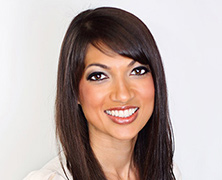Overcome Gender Bias and Become the Leader You Want to Be
The simple fact is that women and men are perceived differently from the day they walk in the door for that very first interview to the day they retire. And that difference in perception is rooted in the gender bias we, as women, work every day to overcome.
We’re told good leaders are assertive, decisive, and bold. When men display these qualities, they’re great leaders. When women display these same qualities, they risk being perceived as “too rough.” Often, for women to progress and be socially accepted in their careers, they’re told they need to be nicer, more pleasant, softer—not too abrasive or in your face. That double standard is why we see so few female CEOs of Fortune 500 companies. However, great female leaders are where they are because they’ve figured out how to overcome that barrier.
I’ve learned the most effective way to do this is set bold goals and deliver. Drive results that no one can dispute. Let your achievements speak for themselves. I’ve also learned to strike the right balance and adapt my style to what my team needs and what the situation requires. Good leaders, regardless of gender, lead with balance and empathy to make an even greater impact on their teams, companies, and communities.
But in this kind of environment, it’s incredibly important that there’s universal allyship in the workplace, and that we, as women, lead from the front by supporting other women. All of us are facing the same challenges every day, and we need to show up for each other along the way. For me, personally, this means finding ways to support our Women’s Associate Resource Groups and participating in a mentor circle for young women. As female leaders, we need to be a resource others can go to when they need us—just by having a conversation about gender bias, we’re taking a step toward overcoming it. We need to be role models, and show smart, sharp, young women that it is possible to overcome something as pervasive as gender bias in the workplace. Because, after all, seeing is believing. If they see enough of us do it, I hope they’ll believe they can do it too.







So nice to see you get your point across without mentioning the color of your skin. It was very refreshing. Too often these days we see black women ,in a position of power or high ranking, mention because of their skin color this or because of their skin color that. Which is outright nonsense considering the position they’re in. Everyone focuses on color way too much!!!
It’s an honor to finally see a strong female leader serving a role as CEO for Conn’s HomePlus. As a former employee I had the privilege to have worked myself with the backing of a great team to the top. Working at one of the largest stores which was #2 when I arrived and working with my team to not only take the #1 spot but exceed expectations volume wise. I was the first female to run a number #1 store but also one of the largest stores in the company. However due to society and at that time still being ran by a male dominant platform. It was really hard to continue the role being pushed out. I allowed myself to be sucked in the stigma. Now that I have left and decided to return knowing a female CEO has taken leadership and wanting to return to what I love. Unfortunately I was shut down. I decided to reach out to one of the Vice President of sales who at that time as my district manager who once told me to reach out to him if I ever wanted to return with no luck. It is a huge same mostly knowing what I bring to the table and wanting to work closely with my fellow peers to show other women that it is possible! Just like yourself. I am excited to see the changes to come with you as the new CEO and would have loved to work as one of your employees. Congratulations and excited to see what is to come!
Finally, you have shown the path to leadership is easy..
Funny the previous commenter mentioned her race, even when Chandra did not. Maybe she doesn’t want people to know that she’s black. Or maybe she’s not black at all. Maybe she doesn’t identify as black. Wonder why they felt the need to mention it when she didn’t. I sure wouldn’t mention it, if I had corporate goals!